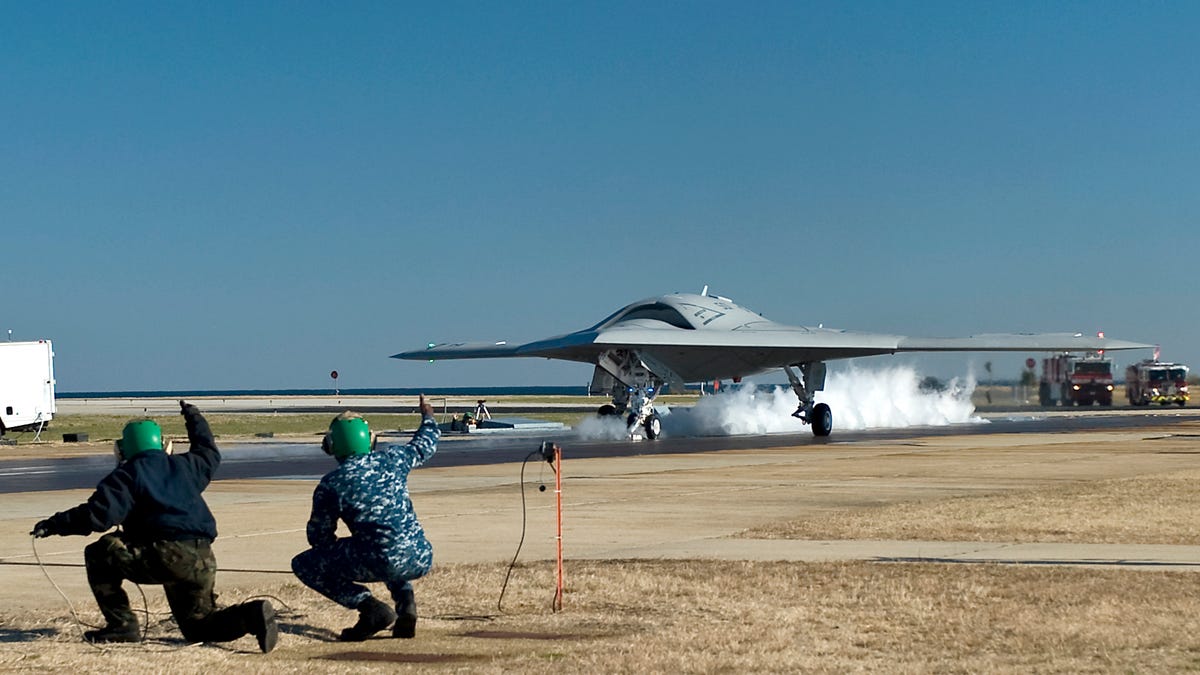Watch the X-47B make its first catapult take-off
The pilotless aircraft needs to prove that it's up to the rigors of the kind of slingshot launch that it can expect soon from an aircraft carrier.

OK, so it was on dry land, not on an aircraft carrier. But first steps are first steps.
On Thursday, the U.S. Navy carried out its first-ever steam catapult launch of the X-47B Unmanned Combat Air System -- see the video embedded below -- and was apparently quite happy with the way things turned out. Before the UCAS demonstrator can make an actual take-off from a carrier, it needs to show that it can handle the unique rigors of being flung slingshot-style into the air instead of making a more leisurely jaunt down a runway.
"This test, in addition to the extensive modeling and simulation done prior to today, gives us great confidence in the X-47B's ability to operate on the flight deck," said Capt. Jaime Engdahl, the Navy UCAS program manager.
The Navy, you see, is used to having test pilots make these sorts of sorties, to help figure out the quirks of new aircraft and avoid potentially nasty showstoppers. The X-47B will largely fly itself, drawing on a number of preprogrammed operations, and the after-action reports on test flights depend on data points, not debriefings.
Drones have become commonplace in military operations over the last half-decade or so, but to this point their use with aircraft carriers has been, well, uncharted waters. Space is tight, the flight deck moves, and operations are highly choreographed, and that'll be a new experience for pilotless planes and their handlers.
The catapult test took place at Naval Air Station Patuxent River in Maryland, where the Navy and X-47B builder Northrop Grumman also have been trying out the handheld controller that the flight deck operator will use aboard the carrier.
In the test flight after the launch, the experimental aircraft carried out maneuvers over Chesapeake Bay as it might when operating off a carrier, including flying in a typical ship holding pattern and executing a carrier approach flight profile, according to Northrop Grumman.
The jet-powered X-47B has a wingspan of 62 feet -- about 17 feet wider than that of the Navy's F/A-18 Super Hornet -- and a top speed in the "high subsonic" range. The aircraft made its maiden flight in February 2011 at Edwards Air Force Base in California. The Navy has two of the prototypes at the Pax River base.
Sea trials for the X-47B will begin soon aboard the USS Harry S. Truman, following additional ground-based catapult tests and final flight software validation. The real test -- carrier-based launches and recoveries -- will take place in 2013.

